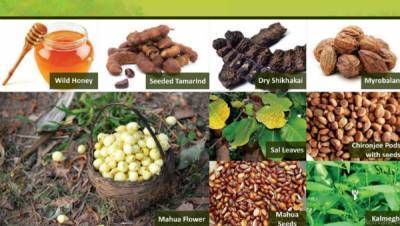NEW DELHI, 17 June 2020: A webinar was organized on 13 June 2020 to discuss ways and means to connect agroforestry farmers to industry and sensitise implementing States to assist farmers in making the correct choice of species.
Sanjay Agarwal, Secretary Department of Agriculture Cooperation and Farmers Welfare while inaugurating the webinar dwelt on the various reforms brought in the agriculture sector to ensure optimum remuneration to farmers to ensure their welfare, including Rs 1.63 lakh crore outlay and the Farming Produce Trade and Commerce (Promotion and Facilitation) Ordinance 2020 to establish a truly national market and give farmers the option to choose the market where they want to sell their produce by removing inter-state trade barriers and providing e-trading of agriculture produce.
He highlighted the multiple uses of agroforestry ranging from additional income to farmers, nurseries as a means of livelihoods especially for women SHGs, green fodder, reduction in requirement of fertilsers by planting leguminous species, carbon sequestration for combating climate change, etc.
Prime Minister’s call for Vocal for our Local is of great relevance to agroforestry too. Agroforestry could contribute to stepping up supply of raw material to industry to reduce import dependency in some crucial commodities. The earlier notion of agroforestry meaning only timber species needs to have a relook from farmers and industry point of view. Timber trees have long maturity period and hence delaysreturns to the farmers. Whereas there are number of rising sectors which would ensure quick returns to farmers as well as fulfill industry requirements, including medicinal and aromatic plants, silk, lac, paper and pulp, tree borne oil seeds for production of bio-fuels, etc.
In the first of a series planned, this webinar had four prominent speakers, namely Dr J.L.N.Sastry, Chief Executive Officer, National Medicinal Plant Board, Rohit Pandit, Secretary General, Indian Papers Manufacturers Association, Dr H.K. Kulkarni, Former Vice President, ITC Limited and Rajit Ranjan Okhandiar, Chief Executive Officer and Member Secretary Central Silk Board.
Promotion of medicinal plants is a major component of Atma Nirbhar Bharat and there is tremendous scope for convergence for tree based and organic medicinal produce.
Issues relating to constraints in supply of raw material to paper industry, which is being made up by imports, were discussed. Quality planting material is the basis for improving productivity and hence returns to farmers.
The presentation flagged the importance of clonal planting material of the correct varieties which would also comply with industry requirement.
Central Silk Board assured to assist farmers who plant the range of silk host species, which on an average would start giving returns in 3-4 years and hence were ideal for agroforestry systems.
In conclusion States were advised to encourage contract farming on similar lines as crops right from pre planting, planting and harvest. Industry, both existing and potential, should be taken as the hub and activities planned around that. Multipurpose species should be encouraged so that returns start flowing at the earliest. This would enable fulfillment of the vision of an ‘AatmaNirbhar Bharat’.
India became the first country in the world to formulate a National Agroforestry Policy in 2014. As a follow up, the Sub Mission for Agroforestry was launched in 2015 to assist the States in encouraging farmers to adopt tree planting along with crops. Agro climatic zone wise agroforestry models have been developed by research institutions, including ICAR and ICFRE. The scheme is currently being implemented in 21 States of the country.




















